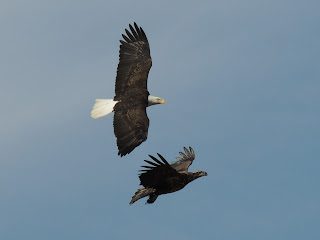If you haven’t visited our
web page recently, check out
our new free resources. We have
added two new online games, a free music download, a link to the Peregrine
Falcon Nest Camera, bat house plans, and nest box plans.
MEMORY GAME
Test your memory skills
while learning about the different kinds of birds. Every match you find will tell you more facts about your
favorite birds. See how many
matches you can find! You score
points for finding all the matches as fast as possible. How high can you score?
PUZZLE GAME
Try to complete each of
four different bird puzzles. Each
puzzle is different every time you play.
See if you can complete all four.
The Raptor Project performs the "Wonderful Birds Song"
FREE MUSIC DOWNLOAD:
“WONDERFUL BIRDS SONG”
Now available for free
download, the song that started it all 20 years ago! “Wonderful Birds Song” has
taught bird basics in sing-a-long format and was the first song written by WBS’
Joe Hoffmann for the children’s Sing-a-long program. The “Wonderful Birds Song” has been heard by thousands of
adults and children alike, both live and on the first “The Raptor Project” CD,
“Save the Future”.
WATCH A LIVE
PEREGRINE FALCON NEST BOX!
In partnership with
Missouri Department of Conservation and Ameren Missouri, the World Bird
Sanctuary is pleased to be able to bring you a live video camera on a Peregrine
Falcon nest box.
The box is located at
Ameren Missouri’s Portage de Sioux power plant in St. Charles County,
Missouri. The wild Peregrine
Falcon pair was successful last year, raising five youngsters. Nest box viewing will be made available
on our web site once nesting behavior has been
observed for the season. Last year
the camera was on from March 12, when the first
egg was laid, through June 15, when the last of the five babies fledged. Of course, the season is subject to
several variables such as climate change, and is up to Mother Nature, herself.
BAT HOUSE PLANS
Download a free bat house
plan.
Erecting a bat house on
your property provides a safe roosting area for bats. This bat house plan was designed by Minnesota DNR Wildlife
Manager Earl Johnson, so it’s called the “Johnson” bat house. You can download this bat house plan
and build your own, or you can visit our website for links to information about
where to buy one. Our website has
more information about the benefits that bats provide for our environment. Speaking of bats, here’s a reminder of
our special event celebrating the world’s bats, “Baturday,” which is Saturday,
April 6, 10-2
NEST BOX PLANS
Download a free Nest Box
plan.
WBS, working in
cooperation with Ameren Missouri, has initiated a nest box placement program to
insure the survival of many songbird species. Within the past twenty years the population of songbirds has
decreased by 15 to 30 percent, depending on the location.
The construction and
placement of nesting boxes is perhaps the most direct way that individuals and
groups can become involved. This
is an especially unique opportunity because it allows private individuals to
truly participate in the protection of species, and in some instances, in the
preservation of endangered species.
Conservation is not a philosophy, but a way of life that ensures
continued life for songbirds and other species.
We hope that you will
enjoy these new free resources.
HAPPY BIRDING!
Submitted by Billie
Baumann, World Bird Sanctuary Outreach Coordinator















































